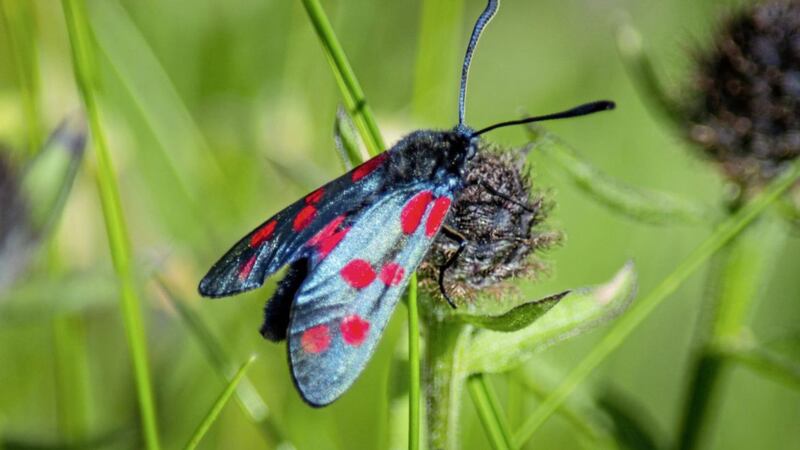AT THE west end of Bundoran town, grey rocky cliffs of thinly bedded shales and limestones, deposited some 300 million years ago, point out across Donegal bay to St John’s point lighthouse. Further west, the imposing cliffs of Slieve League, which William Allingham, from neighbouring Ballyshannon, mentions in his poem The Fairies, when writing of the Fairy King travelling, ‘On his stately journeys/From Slieveleague to the Rosses’.
A meandering pathway along this west end cliff looks down on an extension of the rocks, layered, stepped and stretching out to meet the Atlantic waters. A unique feature is the natural swimming pool which has been used by generations of locals and visitors. The pool, filled with seawater and built into the natural rocks, is refreshed and cleaned during high tides, which also reinvigorate and replenish the many nearby rock pools.
Before leaving the cliff pathway during a recent walk there, I heard the very vocal call of the stonechat, a sound resembling, as its name suggests, two stones being tapped together, hence its Irish name, ‘caislín cloch’, the stone chatterer. Such chattering, the source of the belief in English folklore that the bird is continually chatting with the devil.
This male bird perched on a low bush, proudly displayed its striking black head, white neck collar and deep orange-red breast. Scarce in the Irish midlands, Saxicola rubicola hibernans is a resident bird which breeds mostly in scrubby areas along our coasts and uplands.
The scientific Latin name Saxicola means 'rock-dweller' and rubicola, 'bramble-dweller', with the subspecies' name hibernans referring to Ireland (Hibernia).
Another creature to catch my eye on the cliff edge was the six-spot Burnet moth, a busy day-flying species with a fondness for coastline grasses and flowers. Its bright red spots stood out against the dark blue black-coloured forewings.
At the path’s end, I descended the steep steps, as many, known and unknown to me have done over the years, down to have a swim and a look at a rockpool, where, as a young boy, I watched shrimps and other creatures. The swim was most refreshing and even my dog Robbie, hesitant at first, joined me to enjoy the cool water before emerging to shake himself down.
Over then a few hundred yards to the oval-shaped rock pool of shallow water where colourful sea-anemones, attached to stones, greeted me with their floating tentacles open, ready to catch passing prey.
There too as if to welcome me back, were the tiny shrimps drifting gracefully through the water like ballet dancers before suddenly stopping to hover against a background of red and brown algal seaweeds.
Out from underneath the cover of some wrack came two common crabs fighting over the prize of a limpet, both sets of claws trying to dislodge its creamy yellow soft interior. As they battled over their quarry, I looked up to see two cormorants flying low and fast over the water ahead, probably on route to Mullaghmore.
Reflecting on how this rugged place, its features, birds and animals still stir me after all the passing years, I thought of Wordsworth’s words;
My heart leaps up when I behold?A rainbow in the sky:?So was it when my life began;?So is it now I am a man;?So be it when I shall grow old
(My Heart Leaps Up; 1802)?
Returning to the steps, I met a lady on her way to the pool. I commented on my refreshing swim and shared with her that it was here I learned to swim as young boy. Her reply, "No better place to learn."








